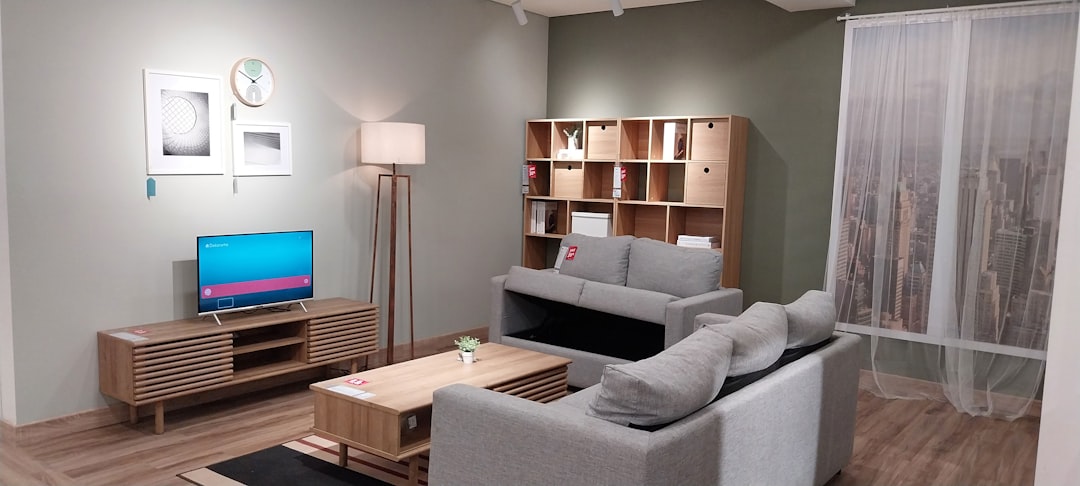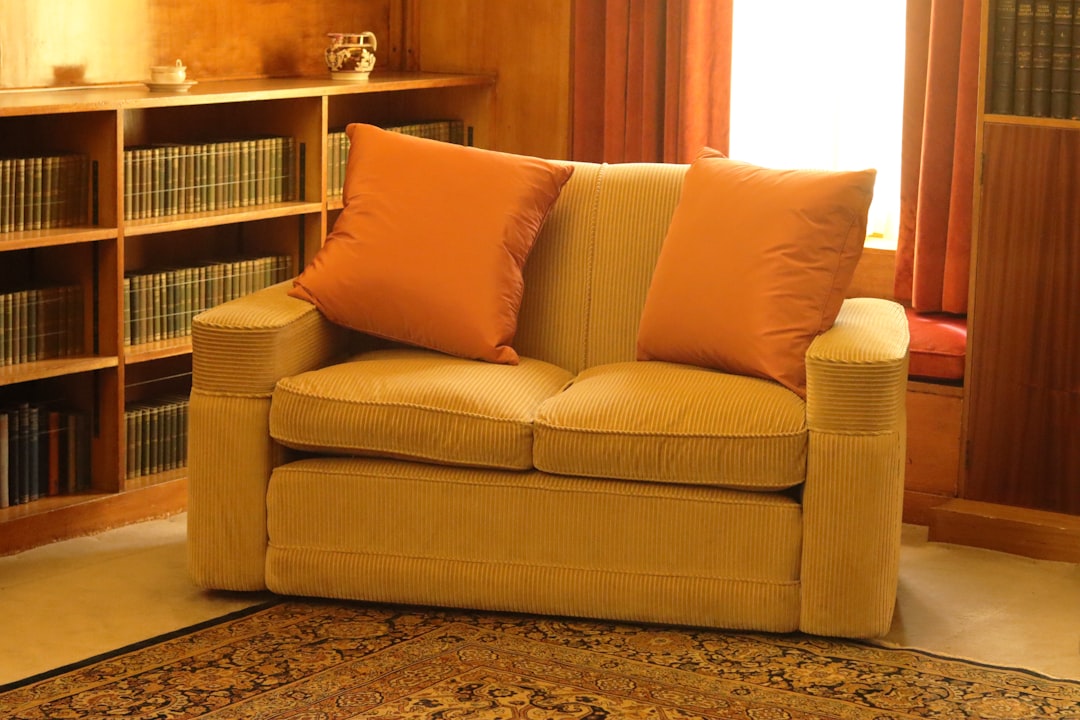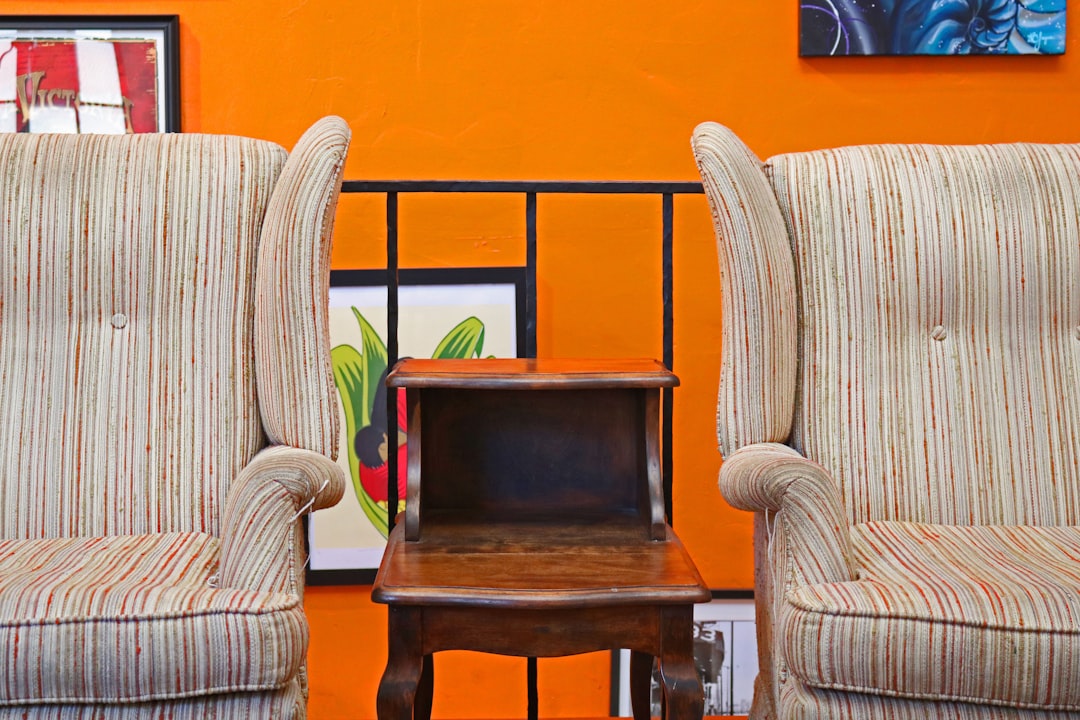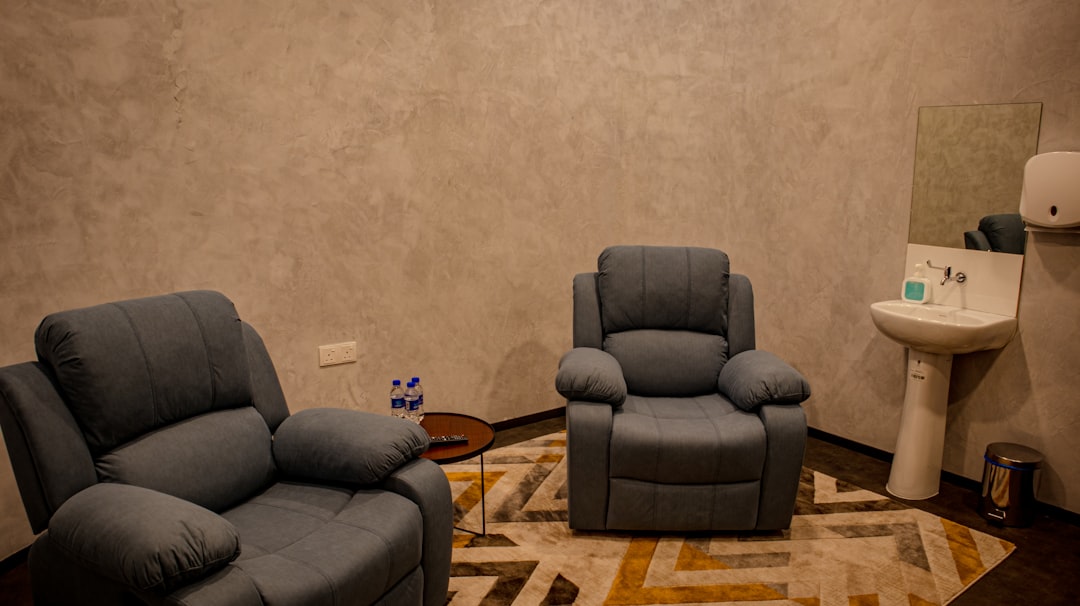

Engage prospects with a scan and streamline customer engagement with FREE QR code marketing tools by Sona – no strings attached!
Create a Free QR CodeFree consultation

No commitment

Engage prospects with a scan and streamline customer engagement with FREE QR code marketing tools by Sona – no strings attached!
Create a Free QR CodeFree consultation

No commitment
Furniture refinishing services face a dynamic business landscape, with consumers expecting transparency, sustainability, and convenience. While essential skills like cabinet refinishing and antique restoration remain central, today’s clients demand digital-first interactions, quick answers, and reassurance throughout their journey.
Many providers struggle to engage prospects who browse their portfolios or pricing but never fill out forms, missing valuable leads and leaving potential jobs on the table. This environment requires businesses to master their craft and also modernize how they educate, capture, and nurture customer interest.
QR codes bridge offline curiosity and digital engagement for furniture refinishing businesses. Whether on shop brochures, showroom displays, or restored pieces, QR codes provide easy access to tutorials, galleries, instant estimates, and scheduling while generating insights that help identify prospects and tailor follow-up. For a category overview, see how brands use QR codes in furniture. Embedding QR codes throughout the customer journey helps answer key questions, educate clients, and convert interest into revenue in a market shaped by modern expectations.

Furniture refinishing services often struggle with outdated brochures, missed follow-ups, and prospects slipping through the cracks after an initial inquiry. Traditional methods make it difficult to track interested visitors or promptly respond to those showing strong intent. QR codes solve these problems by connecting every physical touchpoint to a digital experience that informs, reassures, and converts.
Replace analog, manual interactions with mobile-first experiences that deliver value immediately. Instead of a printed brochure that quickly becomes outdated, use a QR code that opens a living gallery organized by wood species, finish type, or restoration difficulty. Instead of printed estimate sheets or phone-only scheduling, use QR-enabled quote calculators and booking forms. For more, explore QR codes in marketing and practical uses of Google Forms QR codes to power fast intake. These upgrades create a frictionless experience for customers who want answers now and give you visibility into who is engaging and where.
Modern platforms like Sona QR’s product overview help automate lead capture, enrich CRM records with scan context, and trigger timely follow-up. If a high-intent visitor watches a stripping and staining tutorial then opens a quote form, your system can notify a salesperson and send a personalized message with finish suggestions and a link to book a consultation.

A common challenge is the lack of visibility into who visits your shop or browses your site without reaching out, which leaves high-value prospects anonymous. Shoppers today expect seamless access to information at every step: while reading a mailer, strolling through a showroom, or examining a refinished table at a friend’s house. QR codes meet those expectations by making it effortless to act on curiosity.
In furniture refinishing, many decisions hinge on education and trust. People want to understand pricing factors, timelines, sustainability, and results. QR codes support that education in the moment. Add them to appointment cards to offer prep checklists and care guides, to showroom signs to launch material explainer videos, and to invoices to collect Google reviews or enroll clients in maintenance plans. With dynamic QR codes, you can update content after printing, which protects budgets and makes your campaigns more resilient.
With a QR-powered approach, every card, label, or poster stops being a static ad and starts acting as a source of customer insight. You can see which finish samples attract scans, which neighborhoods respond to direct mail, and which trade show demos drive quote requests, all without asking customers to type a URL or dial a number.

Outreach can fall flat when you rely on a single format or outdated channels. Furniture refinishing providers can mix and match QR types to serve different moments of the journey, from research to booking to post-service care. The key is matching the format to the task and keeping the destination page focused on a single next step.
Dynamic codes are especially valuable for conversion-driven use cases and seasonal offers. For example, link the same showroom tag to a finish guide during education-centric seasons, then switch it to a booking incentive in peak months. With Sona QR, you can generate multiple code types, edit destinations over time, and manage everything in one dashboard.

Many refinishing services lose potential business in the moments between early curiosity and a live conversation. A homeowner sees a stunning before-and-after, leaves the showroom intending to research later, then gets distracted. A real estate stager picks up your card but forgets to follow up. QR codes capture that intent the moment it appears and channel it into a structured next step.
Start by mapping your highest-curiosity moments and asking what value would prompt a scan. If someone is observing a refinished cabinet display, they likely want finish details, durability information, and pricing guidance. If someone is reading a mailer, they want credible proof that the service is worth the investment. Strategic QR placement turns those moments into measurable actions.
Aligning QR deployment with moments of curiosity helps you quantify and convert previously invisible touchpoints. Over time, the data reveals where to invest, what messages resonate, and which placements consistently translate into booked work.

QR codes work best when each scan delivers immediate value and a clear path forward. For furniture refinishing, that means pairing the right content with the right context and capturing intent signals as people engage. Focus on use cases that educate, reassure, and accelerate decisions.
Additional ideas include scan-to-schedule workshop seats, scan-to-download prep checklists before pickup day, and scan-to-join referral programs. Successful teams measure impact with practical metrics such as scan-to-form completion rate, quote-to-booking conversion, and post-service review rate, then iterate on content and placement.
Each QR scan is a data point that surfaces intent, context, and behavior. By deploying different codes across key touchpoints, you can segment audiences automatically and use that insight to deliver more relevant follow-up. Instead of treating all leads the same, tailor messages based on what they scanned, where they scanned it, and when. For a deeper look at signals, read Sona’s blog post The Essential Guide to Intent Data: Leveraging Signals to Increase Revenue.
Start by designing segments aligned to your buyer journey. Visitors who watch a stripping tutorial and then open a price calculator are likely in deep research mode. Scanners who use a booking QR at a showroom are closer to purchase. Homeowners who scan a care guide after delivery are excellent candidates for reviews and referrals. Your CRM can store these tags and trigger the right automation for each audience.
Industry-specific audience distinctions might include DIY researchers considering partial restoration, vintage collectors with high-value items, renovators on a project timeline, property managers responsible for multiple units, and designers or stagers who influence repeat work. Treat each segment differently, and you will raise conversion and lifetime value.
QR codes unify offline and online marketing, enabling real-time engagement and better measurement across channels that were previously hard to quantify. The result is a connected journey that feels helpful to customers and reveals which investments drive revenue.
Blend QR codes into your existing strategy, then centralize tracking to see how campaigns perform across media. A showroom tag that sends people to a finish comparison page can be paired with retargeting ads highlighting your most viewed projects. A direct mail piece that drives estimate requests can be followed by a reminder email to non-finishers. With a platform like Sona QR, you can manage codes, analyze performance, and sync data to your CRM in a single workflow.
QR codes serve as the offline onramp to your digital marketing engine. They also unlock a layer of data across channels that were once difficult to measure. With Sona QR, you can manage all codes in one place, monitor performance, and sync scan data with your CRM and ad platforms to create a cohesive system.
Tie each QR implementation to a real business bottleneck. If your team spends time on phone estimates that go nowhere, focus on scan-to-estimate with qualification questions. If your showroom sees high foot traffic but low conversion, deploy scan-to-book CTAs at high-interest displays so visitors can schedule a consultation in seconds.
Choose static or dynamic based on how often the content may change and whether you need data. Static works for evergreen assets like care guides or workshop checklists. Dynamic is best for campaigns, pricing, and any destination you want to update or track over time.
Design matters. QR codes need sufficient size, contrast, and white space to scan quickly. Add a border or frame and a short, benefit-driven call to action. Keep the promise clear: what will the scanner get in exchange for the effort.
Put codes where curiosity peaks. Sample boards, showroom vignettes, in-home leave-behind cards, and mailers create immediate use cases for scanning. Match placements to expected behavior: quick SMS for showroom questions, detailed galleries for at-home browsing.
Launch is the starting line, not the finish. Monitor scan volume, conversion to your intended action, and downstream results like scheduled consultations or completed bookings. Segment by channel and placement to see what deserves more budget and where to adjust creative.
Proving marketing impact is difficult when data is fragmented across print and digital channels. QR code analytics bridge that gap by tracking scans, connecting them to on-site actions, and enriching CRM records with context like location, device, and time of day. With the right setup, you can attribute revenue to specific QR-enabled moments and optimize accordingly.
Knowing someone scanned a code is helpful, but it is far more valuable to understand what happened next. Did they open the estimator and submit it, schedule an appointment, or stop partway through? With Sona QR and Sona, you capture the full picture: scan events, behavior on the destination, and identity resolution that links anonymous activity to known contacts when possible. For measurement frameworks, see Sona’s blog post Single vs Multi-Touch Attribution Models.
The outcome is a performance marketing loop that starts at the moment of curiosity and follows through to job completion. You will know which campaigns deserve expansion, which content reassures buyers, and which messages shorten the time from scan to signed estimate.
QR campaigns become exponentially more valuable when you connect them to a strong operational rhythm. Standardize your code creation, track by placement, and train your team to promote scanning as part of the customer conversation. The goal is to make every scan instantly useful for the customer and automatically actionable for your team.
Focus on a handful of best practices that align to your most common media and buyer journey. For refinishing services, that usually includes showroom displays, print collateral, estimates and invoices, and community events. Keep CTAs simple and benefit oriented, and always test in the environment where the code will be scanned.
Creative deployment examples for this vertical include QR codes printed on finish sample boards that open a visualizer and care guide, QR codes on estimate PDFs that let customers approve scope and deposit in one step, and QR codes on invoices that offer a discounted maintenance plan or a referral reward for the next project. For broader service trade ideas, review home repair QR ideas.
The customer journey in furniture refinishing is increasingly complex, and QR codes have become a practical way to connect offline moments with digital action. They address lost leads and invisible engagement, and they help measure success with clarity. By enabling instant education and action throughout the process, QR codes move people from consideration to booking with less friction.
Industry leaders treat QR codes as both marketing and feedback tools. With the right setup, every scan strengthens the connection between provider and customer. You will deliver tailored content at the right time, capture demand at the source, and attribute revenue to the programs that work.
Furniture refinishing service providers who modernize with QR-driven engagement gain advantages in visibility, trust, and conversion. Integrate codes across your journey, sync data with your CRM, and use platforms like Sona QR and Sona.com to manage and measure performance. Start creating QR codes for free.
QR codes have transformed furniture refinishing services from traditional, hands-on processes into dynamic, customer-educating experiences that drive growth. Whether it’s attracting new clients, enhancing customer understanding of refinishing techniques, or showcasing before-and-after transformations, QR codes create instant, interactive touchpoints that turn curiosity into confident decisions. Imagine your customers scanning a code and instantly accessing detailed care tips, service options, or video demonstrations—right when they need it most.
With Sona QR, you can easily create dynamic, trackable QR codes that update in real time without reprinting, allowing you to tailor content based on seasons, promotions, or new services. Every scan connects directly to measurable outcomes, helping you refine marketing strategies and boost customer satisfaction. Start for free with Sona QR today and transform every scan into an informed customer and a loyal client.
Furniture refinishing involves steps such as stripping old finishes, sanding, staining, and applying new protective coatings to restore or enhance the piece.
Furniture refinishing costs vary based on factors like the type of wood, finish, restoration difficulty, and service provider, with many businesses providing instant estimate calculators accessible via QR codes.
You can find professional services through showroom visits, trade shows, local events, direct mail, and online platforms where QR codes on brochures and displays connect you to portfolios, pricing, and booking options.
Refinishing furniture preserves quality pieces, supports sustainability by reducing waste, often costs less than new furniture, and allows customization and restoration of antiques and valuable items.
DIY refinishing involves researching techniques through tutorials, selecting the right materials, stripping old finishes, sanding, staining, and sealing the wood, with many providers offering QR code access to step-by-step guides and tips.
Use Sona QR's trackable codes to improve customer acquisition and engagement today.
Create Your FREE Trackable QR Code in SecondsJoin results-focused teams combining Sona Platform automation with advanced Google Ads strategies to scale lead generation

Connect your existing CRM

Free Account Enrichment

No setup fees
No commitment required

Free consultation

Get a custom Google Ads roadmap for your business






Launch campaigns that generate qualified leads in 30 days or less.
